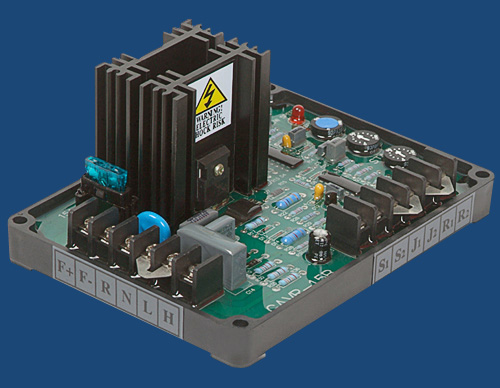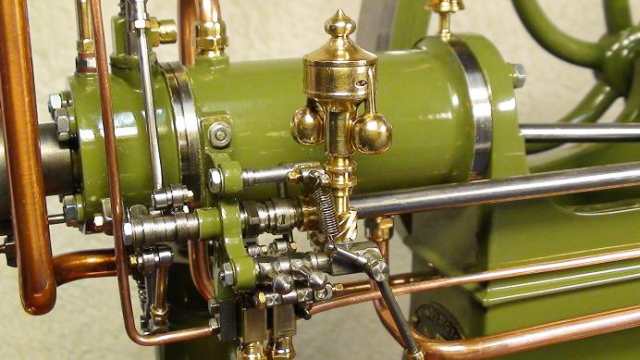class: center, middle # EE-362 ELECTROMECHANICAL ENERGY CONVERSION-II # Equivalent Circuit of Synchronous Machines ## Ozan Keysan [keysan.me](http://keysan.me) Office: C-113 <span class="meta">•</span> Tel: 210 7586 --- # Review: Torque in Synchronous Machines -- # \\(T = K \Phi\_f \Phi\_R sin (\delta)\\) ### \\(K\\): Constant (we'll see what it is in the following weeks) ### \\(\Phi_f\\): Field generated flux (rotor-side) ### \\(\Phi\_R\\): Resultant (or Air-gap) flux (\\(\Phi\_R = \Phi\_f + \Phi\_{ar}\\)) ## \\(\delta\\): Load-angle (very important!) --- # Torque vs Load Angle ## \\(\delta > 0 \\): Generating Action ## \\(\delta < 0 \\): Motoring Action ## \\(\delta = \pm \dfrac{\pi}{2} \\): Maximum torque point ## \\(\delta = 0 \\): Zero Torque (Donkey eats the carrot) --- # Torque vs Load Angle <img src="./images/synchronous_load_angle.png" alt="Drawing" style="width: 700px;"/> --- # Simple Equivalent Circuit <img src="./images/sync_simple_equivalent2.png" alt="Drawing" style="width: 500px;"/> --- # Equivalent Circuit ## The armature windings has some resistance: \\(R_a\\) <img src="./images/sync_simple_equivalent3.png" alt="Drawing" style="width: 500px;"/> ### Ra is usually around <5% of jXs so can be ignored --- ## Motoring and Generating Convention ### Remember synchronous machines are mostly used as generators. <img src="./images/sync_simple_equivalent4.png" alt="Drawing" style="width: 600px;"/> --- # Most important definitions - ## Load Angle (\\(\delta\\)): Angle between phase voltage and field voltage - ## Power Factor Angle (\\(\theta\\)): Angle between phase voltage and current. --- # Load Angle and Power Factor <img src="./images/synch_phasor.png" alt="Drawing" style="width: 800px;"/> ### Neglect \\(R\_a\\) for now. ### [Voltage and Current Waveforms](https://docs.google.com/spreadsheets/d/1K7vG-rez29gQ3fhGt3pZCsy4OtRYml2UaPSoeRor9wI/edit?usp=sharing) --- # Full Equivalent Circuit with Field Circuit <img src="./images/synch_full_circuit.png" alt="Drawing" style="width: 800px;"/> -- ### \\(L\_f\\) can be neglected at steady state (DC) conditions ## Remember \\(I\_f\\) can be controlled to adjust \\(E\_f\\) --- # Operation Modes: Standalone Generating ### Assume you have a single diesel generator supplying a load -- <iframe width="560" height="315" src="https://www.youtube.com/embed/LqpQZd9XxJM" frameborder="0" allowfullscreen></iframe> --- # Standalone Generating # Challenge: -- - ## Keep the terminal voltage constant -- - ## Keep the frequency of the electricity constant --- # Standalone Generation -- ## Assume we have a resistive load (unity pf) -- ## Assume the field current and speed is kept constant and see what happens to terminal voltage as we increase the load. --- ## Standalone Generation with Unity Power Factor ### Speed is kept constant. ### \\(I_f\\) is kept constant and hence magnitude of \\(E_f\\) constant -- <img src="./images/sync_unity_pf.png" alt="Drawing" style="width: 600px;"/> ## As load increases, \\(V_t\\) slightly decreases. [Animation](https://andymikeknight.github.io/machines/synchronous/sg_standalone.html) --- ## Standalone Generation with Lagging Power Factor ### Magnitude of \\(E_f\\) constant -- <img src="./images/sync_lagging_pf.png" alt="Drawing" style="width: 450px;"/> ### As load increases, \\(V_t\\) considereably decreases. [Animation](https://andymikeknight.github.io/machines/synchronous/sg_standalone.html) --- # Leading Power Factor <img src="./images/sync_leading_pf.png" alt="Drawing" style="width: 550px;"/> ### As load increases, \\(V_t\\) slightly increases. [Animation](https://andymikeknight.github.io/machines/synchronous/sg_standalone.html) --- # Voltage Regulation -- ## \\(V\_{reg}= \dfrac{V\_{no-load}-V\_{full-load}}{V\_{full-load}}\\) --- ## In a standalone power system, we want to keep the frequency and voltage constant. -- # Solution? -- ## Control Field Current to adjust \\(E_f\\) so that constant \\(V_t\\) magnitude can be achieved --- # AVR? -- : Automatic Voltage Regulator --  --- --- # What does this device do?  ---  -- ## Speed Governor: ## Centrifugal Flyball System works as a speed controller --- # Watt's Steam Engine <iframe width="560" height="315" src="https://www.youtube.com/embed/clhE-t8txT8" frameborder="0" allowfullscreen></iframe> -- ### [We're still using the same technology](https://www.youtube.com/watch?v=1VqS74JJ17U) --- # Speed control ensures constant frequency --- ## Full Control Scheme of a Diesel Generator <img src="https://api.intechopen.com/media/chapter/44431/media/image1_w.jpg" alt="Drawing" style="width: 750px;"/> --- ## Exercise (Chapman Ex. 4.2) --- ### A 480-V, 60-Hz, Δ-connected, four-pole synchronous generator has the open-circuit characteristics as shown in the figure. This generator has a synchronous reactance (Xs) of 0.1 Ω and an armature resistance of 0.015 Ω. <img src="./images/ee362/generator_OCC.png" alt="Drawing" style="width: 450px;"/> --- ### a) What is the speed of rotation of this generator? -- ### b) How much field current must be supplied to the generator to make the terminal voltage 480 V at no load? -- ### c) If the generator is now connected to a load and the load draws 1200 A at 0.8 PF lagging, how much field current will be required to keep the terminal voltage equal to 480 V? -- <img src="./images/ee362/generator_phasor.png" alt="Drawing" style="width: 600px;"/> --- ### Under full-load conditions, the friction and windage losses are 40 kW, and the core losses are 30 kW. Ignore any field circuit losses. -- ### d) How much power is the generator now supplying? How much power is supplied to the generator by the prime mover? What is this machine's overall efficiency? What is the torque of the prime-mover? <img src="./images/ee362/generator_power_flow.png" alt="Drawing" style="width: 800px;"/> --- ### e) If the generator's load were suddenly disconnected from the line, what would happen to its terminal voltage? -- ### f) Suppose that the generator is connected to a load drawing 1200 A at 0.8 PF leading. How much field current would be required to keep Vt at 480 V? -- ### Which type of load (leading or lagging) needed a larger field current to maintain the rated voltage? Which type of load (leading or lagging) placed more thermal stress on the generator? Why? --- ## You can download this presentation from: [keysan.me/ee362](http://keysan.me/ee362)